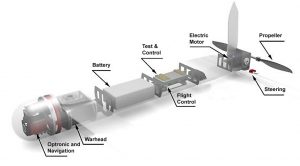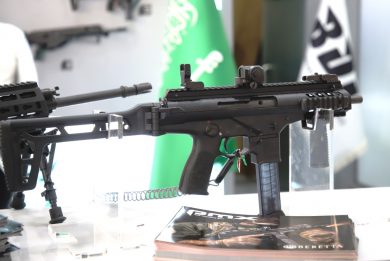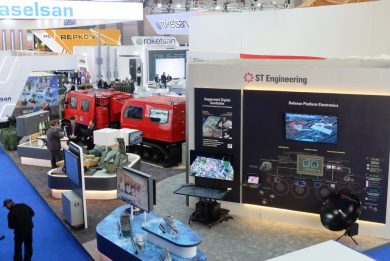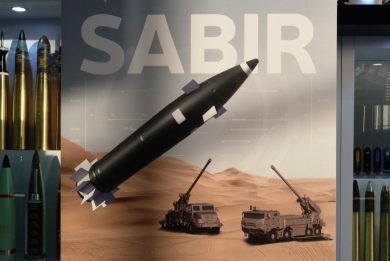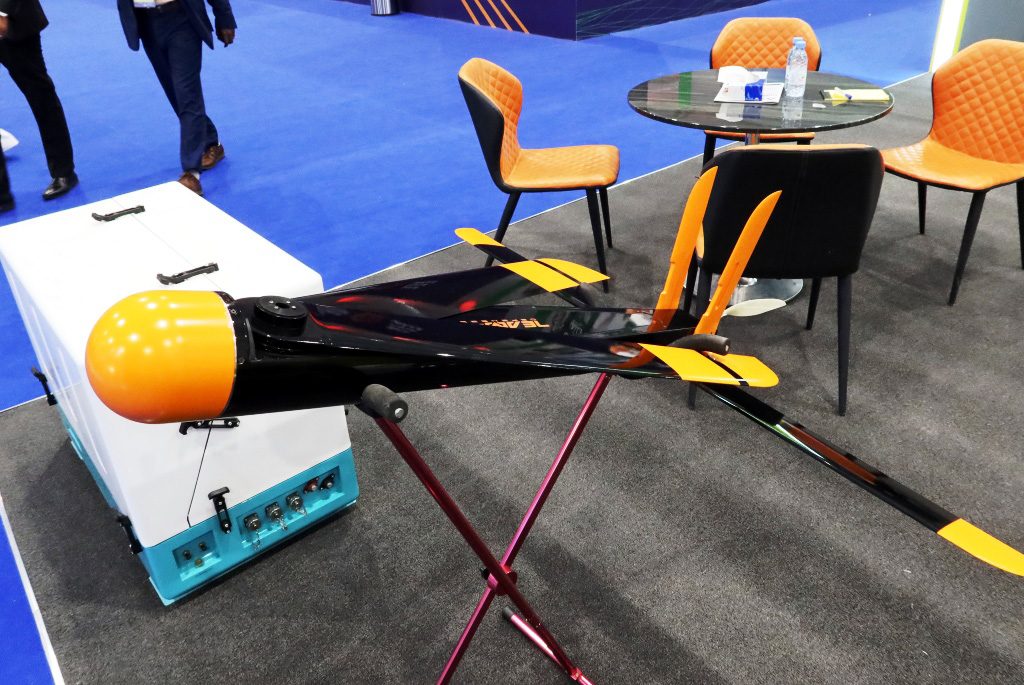
More on the Chinese ZD UAS and loitering munition family
Following the World Defense Show exhibition, more details emerged on the ZD family of UAS and Loitering Munitions (LM) of Chinese origin, which at the show were presented by Team4 Entreprise, a Saudi contracting company established in 2018.
EDR On-Line already detailed the ZD90 LM in a recent article and we propose here the added information gathered after that story was published.
A cutaway shows the optronic payload at the front, which probably also includes the GPS/INS navigation unit, followed by what seems the warhead, then the battery, the flight control and the test and control unit, the electric motor being at the rear and driving directly the two-blade propeller with folding blades. According to a new data sheet obtained the maximum payload is 2.5 kg rather than 3 kg, while ceiling is 4,500 meters and not 5,000. Size and maximum take-off weight are confirmed, respectively 140 mm diameter and 1,070 mm length. Navigation is provided by a satellite receiver working both on the BeiDou (BD) Chinese constellation as well as on western GPS signals. According to available information, China launched 35 BD-3 (3rd generation) satellites, the last one in June 2020, accuracy being declared “millimetric”; however the declared accuracy of the ZD90 is a CEP of 1.5 meters. The optronic sensors installed at the front provide images both in the visible and IR spectrums. With a “secondary battery” endurance is of 40 minutes; no more details are provided, so we can assume the endurance in the Loitering Munition version might be shorter, the 40 minutes being obtained by installing the “secondary battery” in place of the warhead when the ZD90 is used in surveillance and reconnaissance mode.
The ZD90 is the intermediate model of the family. The smaller one is the ZD70, which has an MTOW of 7 kg and a 1 kg payload. The architecture is identical to that of the ZD90, as well as most of the data such as endurance, cruise speed, ceiling, navigation and launch systems. The diameter is reduced to 120 mm and the length to 914 mm. The payload provides day-only images in the visible spectrum and an undefined “magnetic detection” sensor.
The bigger member of the ZD family is the ZD180, which has a 20 km MTOW and a 4 kg payload. While speed and ceiling remain the same, endurance is here increased to 60 minutes, always with secondary battery. The ZD180 has a 180 mm diameter body and is 1,650 mm long. A day/night payload is installed at the front.
According to the Saudi company the ZD family can fly for more than 50 km, the data link range being 10 km. The ground segment is made of the data link terminal and antenna and a ruggedised computer It also mentions a launcher module containing 20 ZDs to be installed on a vehicle, other modules being added if the platform can carry them.
Team4 Entreprise states that the ZD body can be produced locally, an assembly line being also part of the localisation process. A price of 23,810 US$ is mentioned for the casing, propulsion motor, electric regulator, propeller and steering gear, if more than 500 pieces are ordered.The company does not provides details about the warhead type, but states that its systems are more effective than Raytheon’s Coyote, which has a 6 kg MTOW.
Photo by P. Valpolini graphic courtesy Team4 Entreprise

